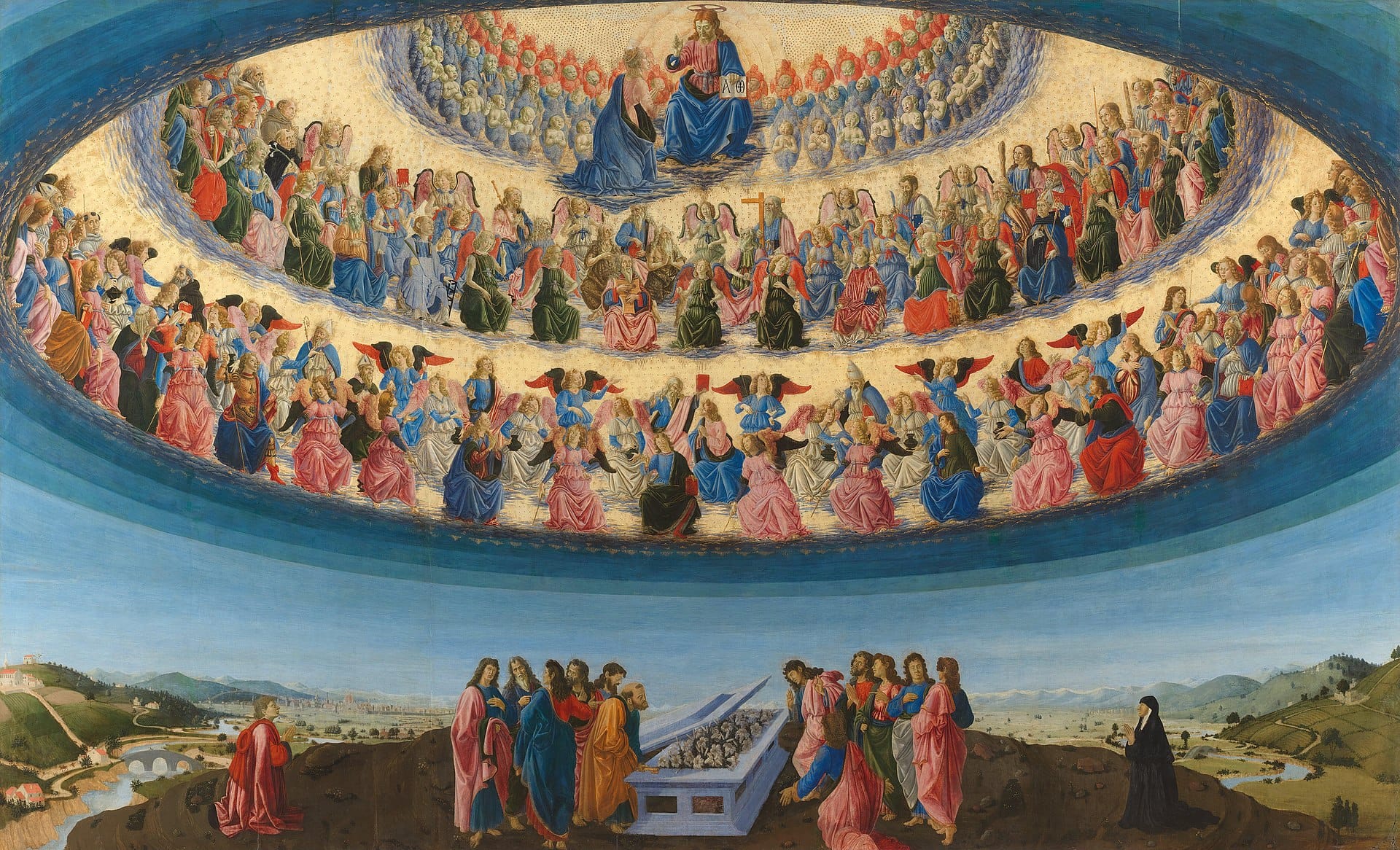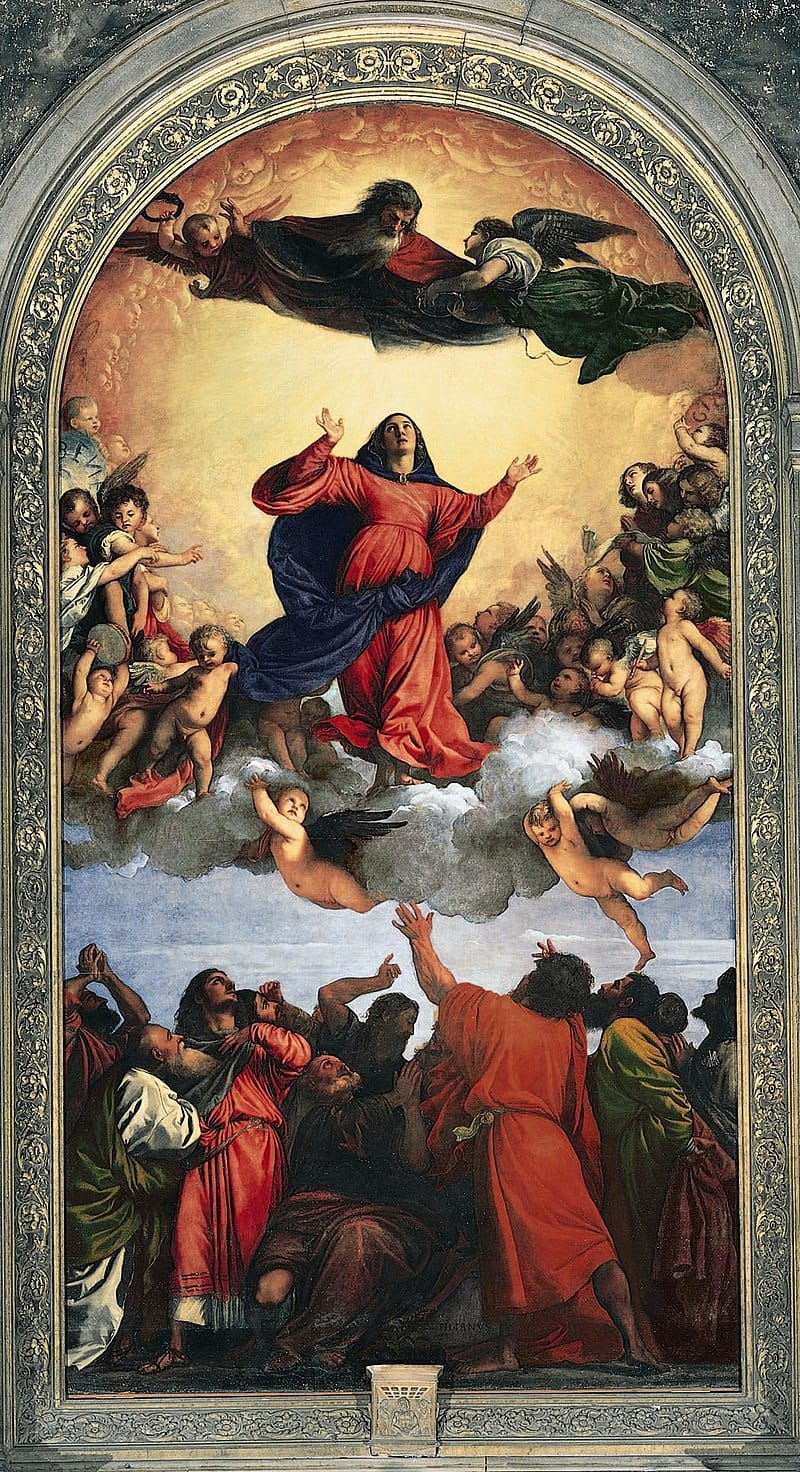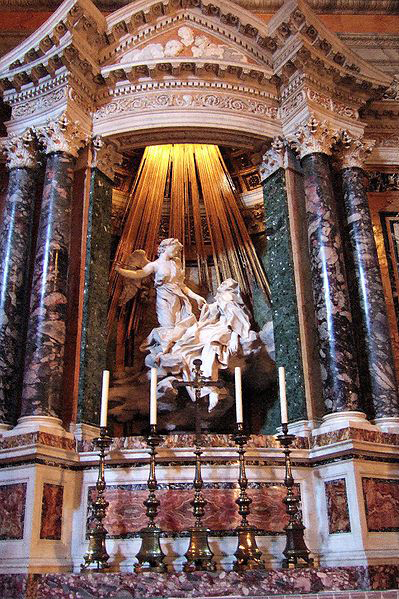The Divine Elevator

If religious architecture evokes the pathway to and from Heaven, or down to Hell, there are lots of stories and paintings about it too: Jacob's Ladder, angels visiting earth (Genesis 28), praying monks climbing a ladder toward Jesus and the light, distant clouds in the sky seen from Mt. Carmel, Dante's Divine Comedy, William Blake... Up/down...

Christianity, the Annunciation, the Ascension, the Assumption (or Dormition), the Immaculate Conception, and, of course, in Jewish Kabbalist theology the 10 Sefirot, all involve levitation - the Divine Elevator. In apocalyptic theologies the Rapture derives from ancient beliefs about the descent of the Sophia (see Matthew 24) and it's hard to think of Intelligent Design any other way (see John 1). It's beams of light, emanations, the breath of God, with a few clouds thrown in...
This is Francesco Botticini's Assumption of the Virgin from the late 1470's.

Titian's Assumption of the Virgin (1516-1518) is an enormous painting in the Basilica di Santa Maria Gloriosa dei Frari in Venice, that most Byzantine of cities. Note the dome and golden mosaic effect at the top as Mary ascends toward the light. Titian was 28 when he painted it.

It is sometimes said that these metaphors are not to be understood spatially, but I disagree. These metaphors are vertical. For horizontal metaphors, here... I confess I don't understand any of this. The ancient Greeks and early Christians thought Heaven was in the sky and that the soul must ascend to join God who resided there, but why? It doesn't make a lot of sense.
The "vertical" style persists through the Baroque period in the next century. Below is Bernini's The Ecstasy of Saint Teresa (1645-52), in Rome's Santa Maria della Vittoria church. That is Saint Teresa of Ávila on the right, an angel on the left. Although it is hard to see in the photo, Teresa is levitating on a cloud and while the dome is now out of sight, golden rays reach down to caress her.

Although Bernini intended it as a serious mystical work, cynics have read orgasm into her pose - see the closer image below. They are both right. There is no way to get around the associations that come with the word ecstasy ("Estasi") or rapture, let alone her pose, and so the more interesting question here has always been: What are the links between ecstatic religion and sexual desire?

Take, for example, what Teresa of Avila wrote in Libro de la vida:
In his hands I saw a large golden spear and in its iron tip there seemed to be a point of fire. I felt as if he plunged this into my heart several times, so that it penetrated all the way into my entrails. When he drew it out, he seemed to draw them out with it, and left me totally inflamed with a great love for God. The pain was so severe, it made me moan several times. The sweetness of this intense pain is so extreme, there is no wanting it to end, and the soul is not satisfied with anything less than God.
Similar sentiments can be found in the writings of her younger associate John of the Cross (San Juan de la Cruz). Interestingly, both Teresa and John were believed to be of converso (Jewish) descent.
